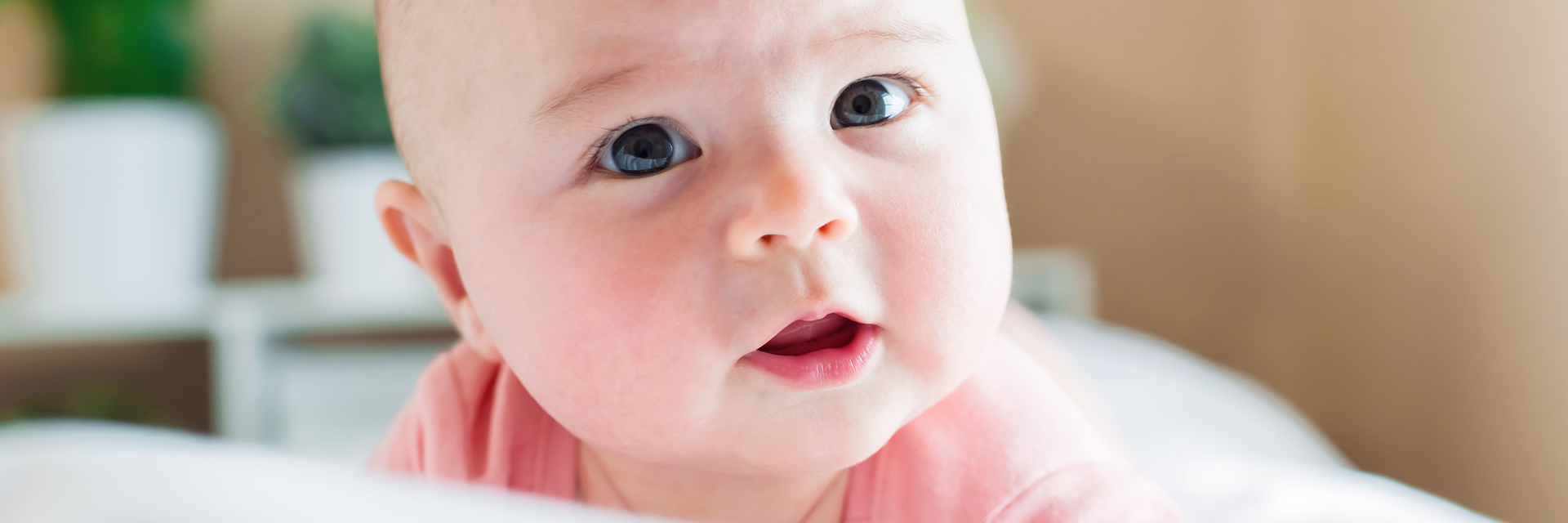You’ve probably noticed that up to this point, your baby was doing a lot of crying—we mean a lot of crying! By 3 months, though, that crying often starts to slow down to about 1 hour a day after peaking at about 6 weeks. Here’s a look at what a baby typically does at 3 months:
Social / Emotional Milestones
- Starts to develop a social smile
- Likes playing with others and may cry when it stops
- More expressive with face and body
- Imitates some movements and facial expressions
Visual and Hearing Milestones
- Watches faces intently
- Eyes follow moving objects
- Recognizes familiar people and objects at a distance
- Smiles at sound of your voice
- Begins to babble and to imitate some sounds
- Turns head toward sound
- Begins to use hands and eyes in coordinated way
Movement / Physical Milestones
- Can raise head and chest, and support upper body with arms, when lying on stomach
- Stretches legs out and kicks when lying on stomach or back
- Opens and shuts hands
- Pushes down on legs when feet are placed on a firm surface
- Brings hands to mouth
- Grasps and shakes hand toys and swipes at dangling objects
Concerned About Your Child’s Development?
All babies are different and develop at their own pace. If your infant has not yet reached some of these milestones, it doesn’t necessarily mean something is wrong.
Still, you know your child best. And developmental delays or disorders are most successfully treated when caught early.
If you have concerns, don’t wait.
Talk with the healthcare provider if you think your child...
- Is not meeting milestones for his or her age
- Has lost skills he or she once had, or is not doing something you’d expect him or her to be doing
Or if you have concerns about...
- How your child plays, learns, speaks, acts or moves
- Other things your child does
SOURCE: These developmental milestones from the American Academy of Pediatrics provide a general idea of what most babies can do at this age.
See also ...
• Infant vision: Birth to 24 months
• What your 3-month-old is learning and experiencing
• Looking ahead: Development at 4 months
This message is not intended to provide individual medical advice. Always seek the advice of a physician or qualified healthcare provider for any questions you have about your health or medical condition, your breastfeeding issues and your infant's health. Never disregard, avoid or delay contacting a doctor or other qualified professional because of something you have read in our emails, webpages or other electronic communications.
Powered by UbiCare

